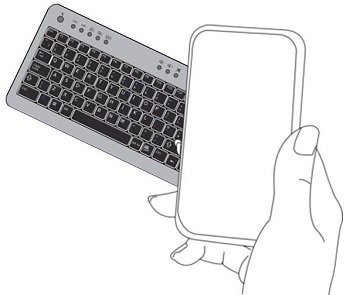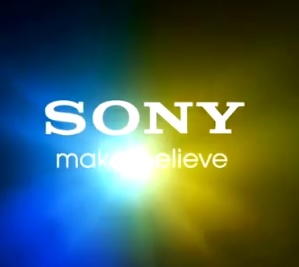A new report from BerryReview has stated that this new device is currently in the works by the handset maker.
Blackberry Ltd is, according to a recent BerryReview report, currently testing out a new design for a device that has a storable keyboard and that uses a pivoting smartphone cover in order to achieve this purpose.
The report indicated that a device of this nature may actually be launched notably sooner than expected.
In fact it is quite likely that the BlackBerry device that is currently under review could potentially be launched within the second quarter of 2015. Its code name is currently Visa and Victoria. The new feature with the storable keyboard was revealed when it was discovered that a patent for it (#8,830,667) had been filed on September 9 with the United States Patent Office.
BlackBerry has been known for its practical smartphone keyboards that are considered one of their best features.
 The patent pointed out that the smartphone keyboard element can move freely from a position where it is, to where it is not deployed. It explained that “A cover pivotally couples to the housing and is configured to at least partially cover the keyboard portion when the keyboard portion is in the non-deployed position and to reveal the keyboard portion when the keyboard portion is in the deployed position.”
The patent pointed out that the smartphone keyboard element can move freely from a position where it is, to where it is not deployed. It explained that “A cover pivotally couples to the housing and is configured to at least partially cover the keyboard portion when the keyboard portion is in the non-deployed position and to reveal the keyboard portion when the keyboard portion is in the deployed position.”
There are three rows in the keyboard that is described by the patent filing, which may be comparable to that of the upcoming square Passport smartphone from that manufacturer. With this keyboard element, when it is displaced, one row will be left behind for use as a trackpad and will reveal a small number of important keys.
That said, it is unknown what true benefit will be added by shifting the keyboard, as removing it will not provide any greater screen size. That said, there were no further details of that nature revealed in the patent filing. This patent is being taken quite seriously in the mobile technology news world and is believed by many to be another device that is in development as a part of the latest strategy by the company’s CEO John Chen, to claw the business back into serious relevance.
Lucy |
September 23, 2014
This rival to Google Glass will become available for purchase during the first quarter of next year.
Sony has announced that its augmented reality glasses, a product which will be in direct competition with Google Glass, will become available by the end of March, next year.
Simultaneously, it revealed that its software development kit has now become available.
The hardware for these augmented reality glasses will also soon be available for developers. This announcement about the SmartEyeglass aligns well with a range of different product unveilings and releases within the wearable technology category. That said, while many companies (including Sony) have been stepping into wearables with devices such as smartwatches, not nearly as many have looked to headsets for this same purpose.
The augmented reality glasses from Sony were first revealed in their prototype form at the recent CES 2014.
 These AR technology devices are meant to be just as versatile as Google Glass, while rising above those rival products in a number of ways. While the prototype for the SmartEyeglass is somewhat awkward in appearance, it is heavily equipped with a range of different sensors, such as an electronic compass, a gyroscope, an accelerometer, an ambient light censor, and a 3 megapixel camera. It is also wired to an external battery pack that is equipped with a microphone and added touch sensor.
These AR technology devices are meant to be just as versatile as Google Glass, while rising above those rival products in a number of ways. While the prototype for the SmartEyeglass is somewhat awkward in appearance, it is heavily equipped with a range of different sensors, such as an electronic compass, a gyroscope, an accelerometer, an ambient light censor, and a 3 megapixel camera. It is also wired to an external battery pack that is equipped with a microphone and added touch sensor.
Now, Sony has also released the software development kit for this wearable technology and has stated that by the end of March, next year, the hardware kits would also be ready for developers to purchase. Aside from the way that the battery is attached, the primary difference between the Sony product and Google Glass is that the SmartEyeglass uses a green monochrome display in order to be able to provide an information overlay over the actual view of the user.
Like Google Glass, the Sony augmented reality glasses will be able to sync with Android smartphones in order to provide the wearer with various types of alerts and other forms of information, such as navigation directions. After recent announcements that mobile devices have been hurting Sony’s profitability, it is clear that they are highly driven to make their mark in new cutting edge market sectors.
 The patent pointed out that the smartphone keyboard element can move freely from a position where it is, to where it is not deployed. It explained that “A cover pivotally couples to the housing and is configured to at least partially cover the keyboard portion when the keyboard portion is in the non-deployed position and to reveal the keyboard portion when the keyboard portion is in the deployed position.”
The patent pointed out that the smartphone keyboard element can move freely from a position where it is, to where it is not deployed. It explained that “A cover pivotally couples to the housing and is configured to at least partially cover the keyboard portion when the keyboard portion is in the non-deployed position and to reveal the keyboard portion when the keyboard portion is in the deployed position.”
 These AR technology devices are meant to be just as versatile as Google Glass, while rising above those rival products in a number of ways. While the prototype for the SmartEyeglass is somewhat awkward in appearance, it is heavily equipped with a range of different sensors, such as an electronic compass, a gyroscope, an accelerometer, an ambient light censor, and a 3 megapixel camera. It is also wired to an external battery pack that is equipped with a microphone and added touch sensor.
These AR technology devices are meant to be just as versatile as Google Glass, while rising above those rival products in a number of ways. While the prototype for the SmartEyeglass is somewhat awkward in appearance, it is heavily equipped with a range of different sensors, such as an electronic compass, a gyroscope, an accelerometer, an ambient light censor, and a 3 megapixel camera. It is also wired to an external battery pack that is equipped with a microphone and added touch sensor.